上海艺博会“杰出艺术家”们这次的作品方案
发起人:嘿乐乐 回复数:20
浏览数:4484
最后更新:2007/08/21 03:22:20 by
参展艺术家:Lu Hao 卢昊
1969年2月9日出生于北京,毕业于中央美术学院。
XIN DONG CHENG GALLERY程昕东画廊
程昕东国际当代艺术空间2000年成立于北京,在中国与世界各国之间建立了一座文化的桥梁,其作用是在东西方当代艺术中断半个世纪的交流之后,为中国大众提供了开阔视野的机会。它也引领西方公众去发现和欣赏来自中国的崭新的当代艺术,同时也在很大程度上拓展了大众对国际艺术的鉴赏力。
[attachment=53127]
作品介绍:
卢昊的作品来自“游戏”观念。他是“娱乐”艺术大师,对“娱乐”一词理解得最为透彻。这个“游戏”不局限于在鸟笼子里养鸟,不管它是否流行,而是包括在我们的当代世界中所有能够“飞走”的东西—通过理论性的支持而保存在某个地方。
卢昊,鸟、昆虫、鱼—树脂昆虫罐、蟋蟀,90x60x55 cm,1999年
卢昊,花、昆虫、鱼—树脂花盆、花,112x75x30 cm,1999年
卢昊,鸟、昆虫、鱼—树脂鸟笼、鸟,90x60x55 cm,1999年
卢昊,花、昆虫、鱼—树脂鱼缸、水、金鱼、蟋蟀,90x60x281,5 cm,1999年。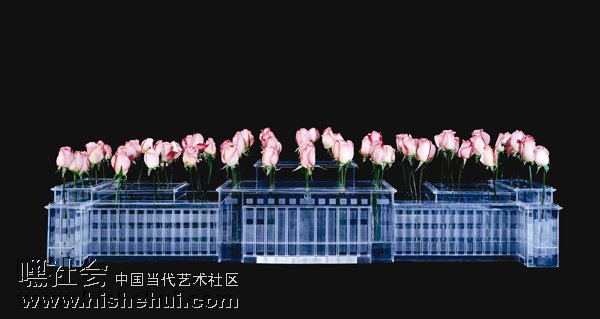
1969年2月9日出生于北京,毕业于中央美术学院。
XIN DONG CHENG GALLERY程昕东画廊
程昕东国际当代艺术空间2000年成立于北京,在中国与世界各国之间建立了一座文化的桥梁,其作用是在东西方当代艺术中断半个世纪的交流之后,为中国大众提供了开阔视野的机会。它也引领西方公众去发现和欣赏来自中国的崭新的当代艺术,同时也在很大程度上拓展了大众对国际艺术的鉴赏力。
[attachment=53127]
作品介绍:
卢昊的作品来自“游戏”观念。他是“娱乐”艺术大师,对“娱乐”一词理解得最为透彻。这个“游戏”不局限于在鸟笼子里养鸟,不管它是否流行,而是包括在我们的当代世界中所有能够“飞走”的东西—通过理论性的支持而保存在某个地方。
卢昊,鸟、昆虫、鱼—树脂昆虫罐、蟋蟀,90x60x55 cm,1999年
卢昊,花、昆虫、鱼—树脂花盆、花,112x75x30 cm,1999年
卢昊,鸟、昆虫、鱼—树脂鸟笼、鸟,90x60x55 cm,1999年
卢昊,花、昆虫、鱼—树脂鱼缸、水、金鱼、蟋蟀,90x60x281,5 cm,1999年。

参展艺术家:顾德新
常青画廊
[attachment=53128]
苹果装置
2006
苹果,不同尺寸的推土机
顾德新(1962年生于北京)。艺术家运用不同的材料进行创作,甚至包括动物的内脏,这使得他的作品既独具魅力,又令人感到排斥。这些作品在特殊领域展示着中国当代艺术的研究成果,它们仿佛要尽情地庆祝着难以自抑的、诙谐的、无限的想要生活下去的愿望。最初,作品给人的印象是要展示一个童趣的、未被污染的世界, 但实际上它们是以自然的手法探讨哲学和现实的问题,并且以荒谬的手法分析着当代中国的种种禁忌、政治和社会的实情。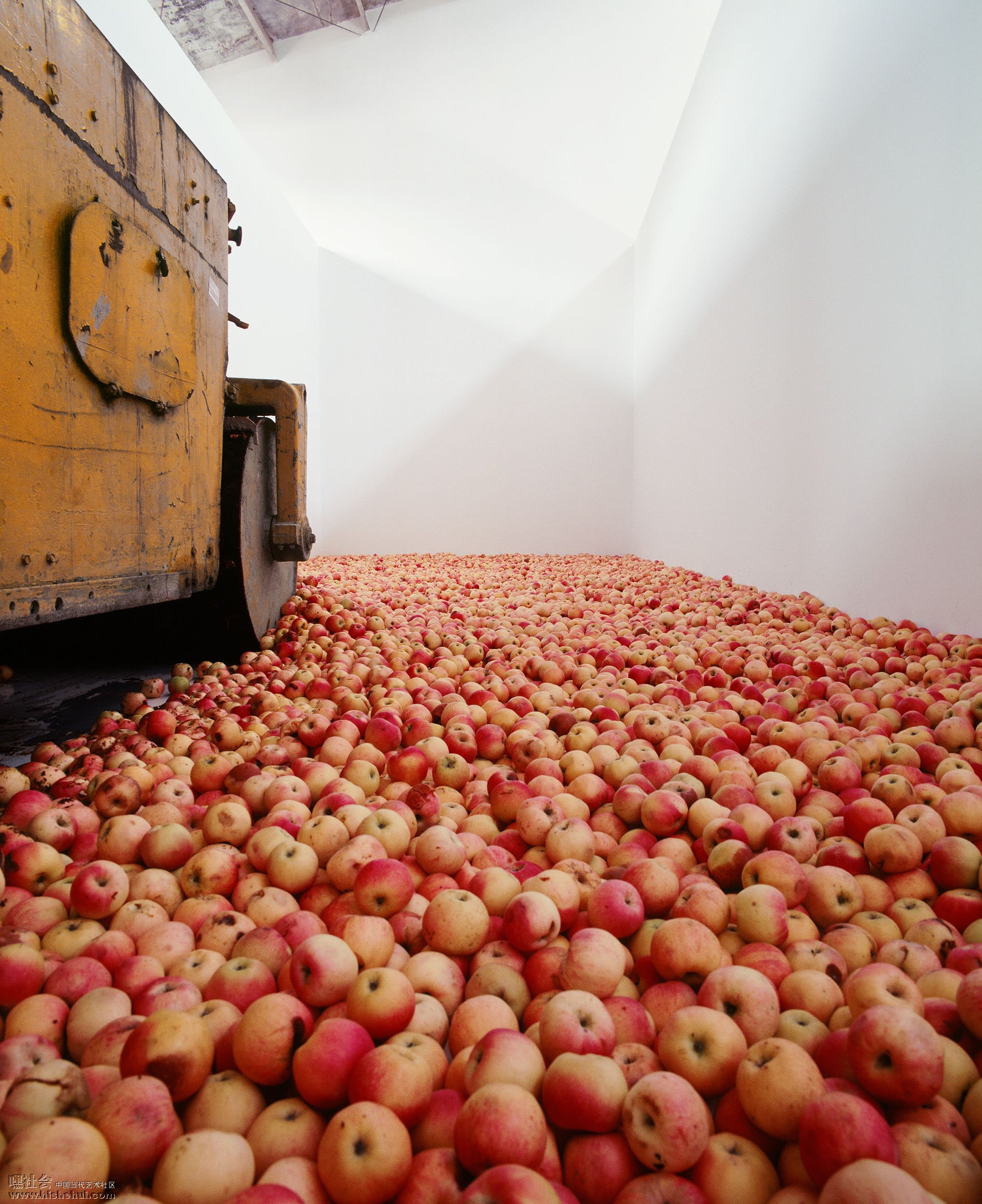
常青画廊
[attachment=53128]
苹果装置
2006
苹果,不同尺寸的推土机
顾德新(1962年生于北京)。艺术家运用不同的材料进行创作,甚至包括动物的内脏,这使得他的作品既独具魅力,又令人感到排斥。这些作品在特殊领域展示着中国当代艺术的研究成果,它们仿佛要尽情地庆祝着难以自抑的、诙谐的、无限的想要生活下去的愿望。最初,作品给人的印象是要展示一个童趣的、未被污染的世界, 但实际上它们是以自然的手法探讨哲学和现实的问题,并且以荒谬的手法分析着当代中国的种种禁忌、政治和社会的实情。

参展艺术家:奈良美智
TOMIO KOYAMA GALLERY
[attachment=53129]
迷你Puff Marshies???
2006年
玻璃钢
155厘米/直径x72厘米高/每件
第3版 艺术家授权之一
摄影: Yoshitaka Uchida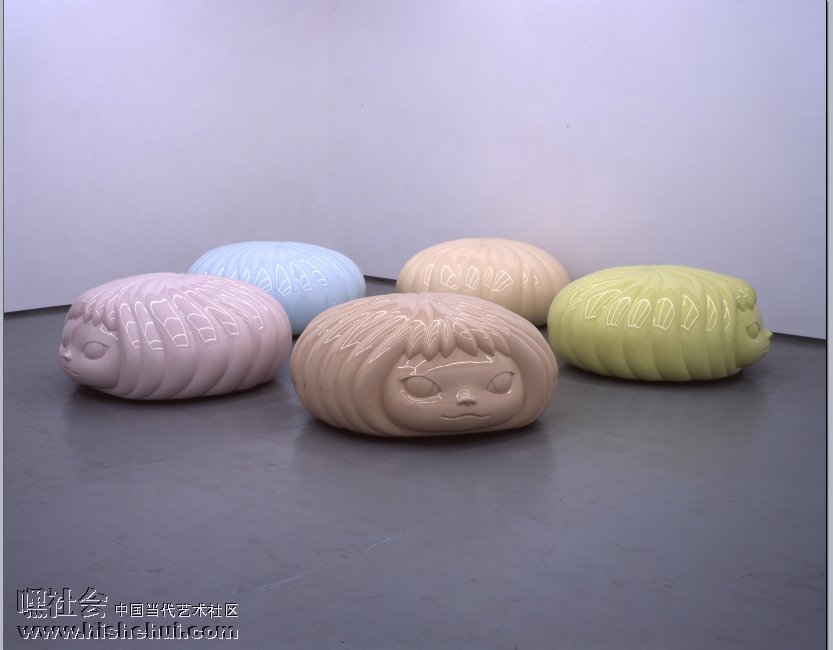
TOMIO KOYAMA GALLERY
[attachment=53129]
迷你Puff Marshies???
2006年
玻璃钢
155厘米/直径x72厘米高/每件
第3版 艺术家授权之一
摄影: Yoshitaka Uchida

参展艺术家:Rashid Rana
NATURE MORTE / BOSE PACIA
[attachment=53130]
离岸记录-1
数码彩印 + DIASEC , 定制墙面
约 6 x 3 米
版数: 5/5
2006
1- 侧面图
2- 中心全景图
3- 作品局部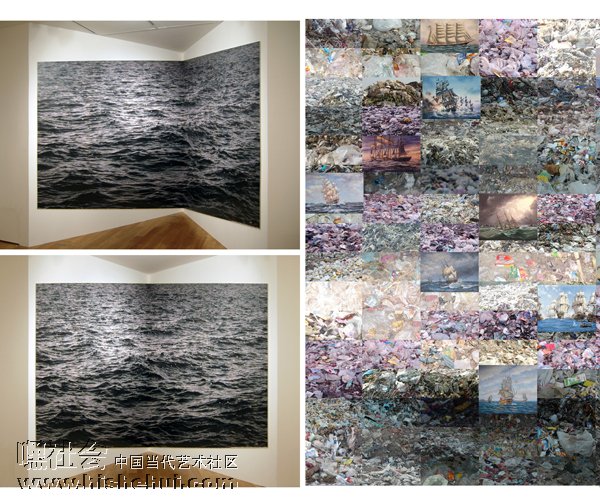
NATURE MORTE / BOSE PACIA
[attachment=53130]
离岸记录-1
数码彩印 + DIASEC , 定制墙面
约 6 x 3 米
版数: 5/5
2006
1- 侧面图
2- 中心全景图
3- 作品局部

参展艺术家:方力钧
画廊:Alexander Ochs Galleries
1963年出生于河北省邯郸市,在北京生活与工作。
[attachment=53131]
眼前是宽阔的优美的全景画,我们在画中可以看到长着翅膀的人物和许许多多小动物。方将它们设计成小小的贵重物品,如同闪闪发光的小珍珠在闪烁。方将它们提升到单独的地位。难以捉摸,漂浮在无边无际的视野中--没有开始,也没有尽头。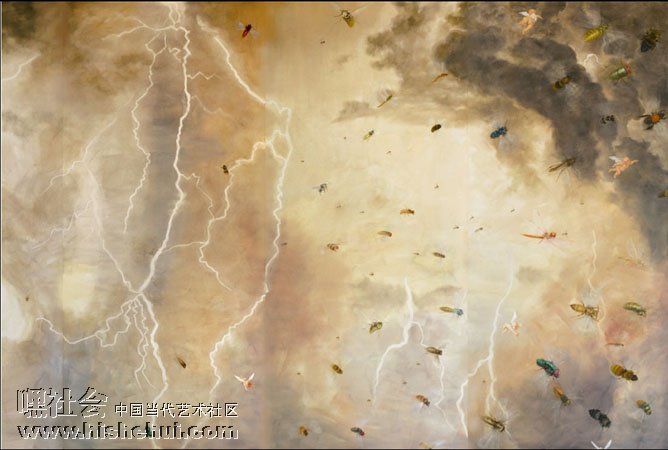
画廊:Alexander Ochs Galleries
1963年出生于河北省邯郸市,在北京生活与工作。
[attachment=53131]
眼前是宽阔的优美的全景画,我们在画中可以看到长着翅膀的人物和许许多多小动物。方将它们设计成小小的贵重物品,如同闪闪发光的小珍珠在闪烁。方将它们提升到单独的地位。难以捉摸,漂浮在无边无际的视野中--没有开始,也没有尽头。

参展艺术家:宋冬
北京公社
宋冬,1966年生于北京。1989年毕业于首都师范大学美术系,现生活和工作于北京。曾参加多个国际大型展览。
[attachment=53140]
《吃喝拉撒睡》,彩色照片,直径77厘米(x5),ed. 12,AP 4,1995年。作品表达了艺术家对艺术的一种东方的态度和哲学。
北京公社
宋冬,1966年生于北京。1989年毕业于首都师范大学美术系,现生活和工作于北京。曾参加多个国际大型展览。
[attachment=53140]
《吃喝拉撒睡》,彩色照片,直径77厘米(x5),ed. 12,AP 4,1995年。作品表达了艺术家对艺术的一种东方的态度和哲学。

[quote]引用第0楼嘿乐乐于2007-08-08 01:05发表的 上海艺博会“杰出艺术家”们这次的作品方案 :
参展艺术家:Lu Hao 卢昊
1969年2月9日出生于北京,毕业于中央美术学院。
.......[/quote]
粗劣的令人发指,触目惊心
参展艺术家:Lu Hao 卢昊
1969年2月9日出生于北京,毕业于中央美术学院。
.......[/quote]
粗劣的令人发指,触目惊心
[quote]引用第6楼二大爷于2007-08-08 02:13发表的 :
粗劣的令人发指,触目惊心[/quote]
卢昊被捏住睾丸啦
粗劣的令人发指,触目惊心[/quote]
卢昊被捏住睾丸啦
还有其他人呢?
哎..好多艺术家都被捏住睾丸啦
参展艺术家:艾未未
画廊:麦勒画廊
“煤”
装置,油漆、玻璃钢
“煤”是一堆煤炭造型的玻璃钢雕塑,并精致的涂上了中国漆。这些漆是一般工匠们用来涂刷高级木制古董家具用的油漆。涂上漆后这些石头将被放置在户外几个星期,一直到他的光滑外表被天气洗刷掉为止。
“煤”作为装置的主题,对艾未未来说它还是日常生活中被用作取暖、烧饭等的原材料,但同时也是空气污染的祸首。通过精致豪华的油漆以及煤自身的争论性,艾未未在这个作品上所体现的是传统、社会、文化价值和历史的影射。
[attachment=53246] [attachment=53247] [attachment=53248]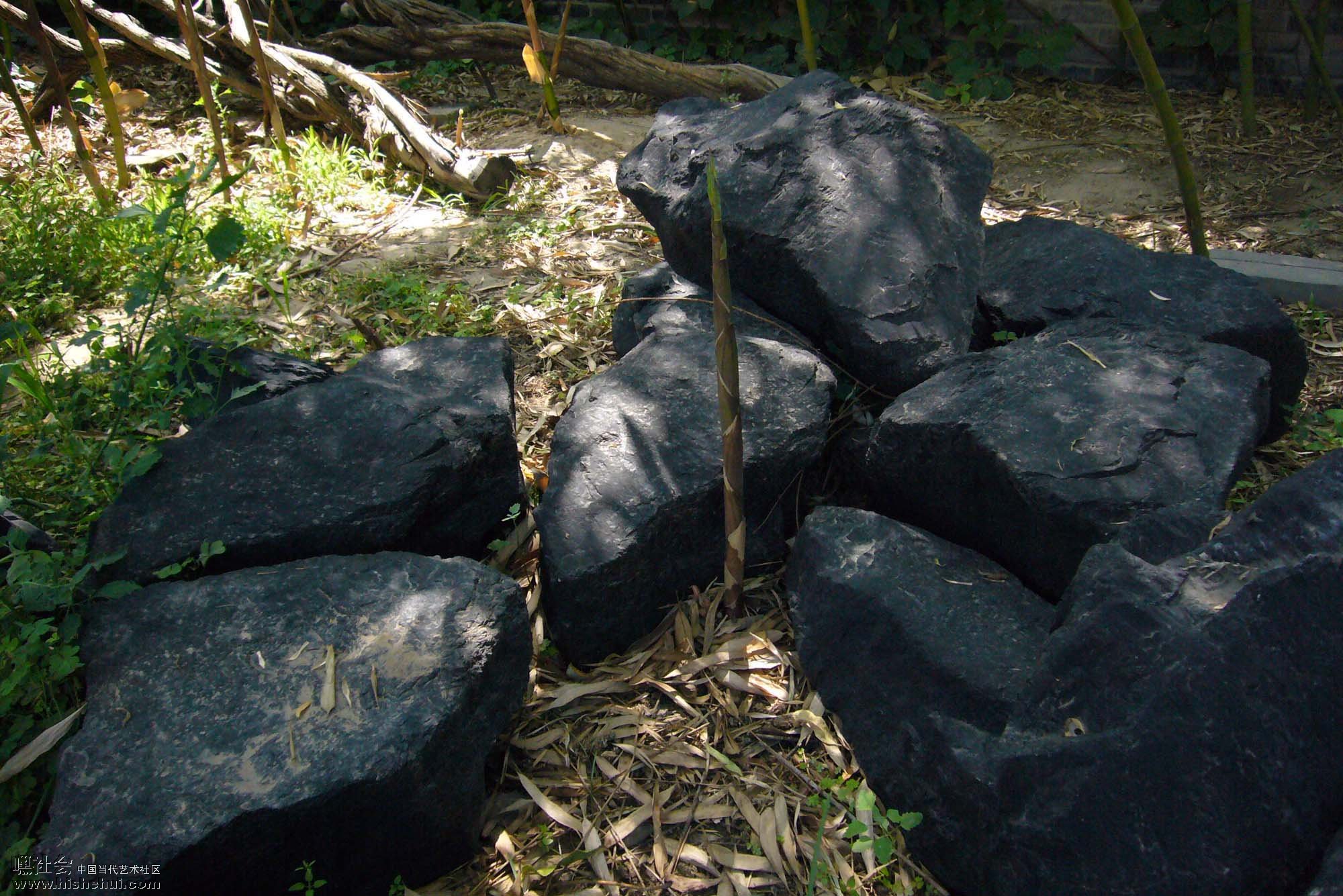
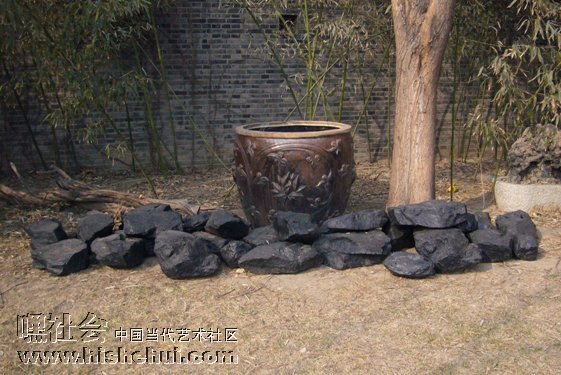
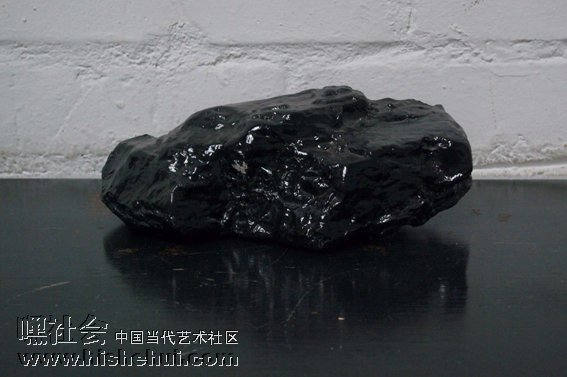
画廊:麦勒画廊
“煤”
装置,油漆、玻璃钢
“煤”是一堆煤炭造型的玻璃钢雕塑,并精致的涂上了中国漆。这些漆是一般工匠们用来涂刷高级木制古董家具用的油漆。涂上漆后这些石头将被放置在户外几个星期,一直到他的光滑外表被天气洗刷掉为止。
“煤”作为装置的主题,对艾未未来说它还是日常生活中被用作取暖、烧饭等的原材料,但同时也是空气污染的祸首。通过精致豪华的油漆以及煤自身的争论性,艾未未在这个作品上所体现的是传统、社会、文化价值和历史的影射。
[attachment=53246] [attachment=53247] [attachment=53248]



[quote]引用第10楼嘿乐乐于2007-08-08 11:02发表的 :
参展艺术家:艾未未
画廊:麦勒画廊
.......[/quote]
我弱弱的问:艾微微的睾丸谁来捏?
参展艺术家:艾未未
画廊:麦勒画廊
.......[/quote]
我弱弱的问:艾微微的睾丸谁来捏?
[quote]引用第11楼guest于2007-08-08 11:12发表的 :
我弱弱的问:艾微微的睾丸谁来捏?[/quote]
看我们下肛工人不捏死你________小岳
我弱弱的问:艾微微的睾丸谁来捏?[/quote]
看我们下肛工人不捏死你________小岳
参展艺术家:陈箴
常青画廊
[attachment=53552]
CHEN ZHEN 陈箴
Purification Room, 2000
净化间,2000
objets-trouvés, clay
h. 350 x 800 x 600 cm
Ph. GAM – Galleria Civica d’Arte Moderna e Contemporanea, Torino
Courtesy Galleria Continua, San Gimignano – Beijing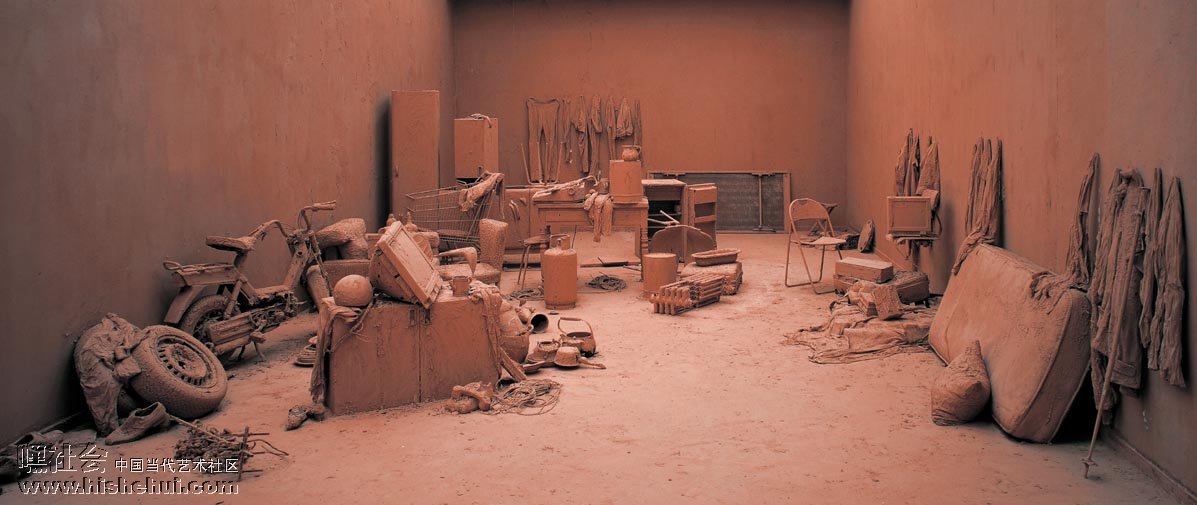
常青画廊
[attachment=53552]
CHEN ZHEN 陈箴
Purification Room, 2000
净化间,2000
objets-trouvés, clay
h. 350 x 800 x 600 cm
Ph. GAM – Galleria Civica d’Arte Moderna e Contemporanea, Torino
Courtesy Galleria Continua, San Gimignano – Beijing

参展艺术家:Jitish Kallat
画廊:Chemould Gallery
[attachment=54522]
[attachment=54520]
[attachment=54521]
艺术家Artist: Jitish Kallat
题目Title: AUTOSAURUS TRIPOUS
尺寸Size: 104inches L x 49inches B x 65inches H
材料Medium: Mixed Media
创造时间Year : 2007
Jitish Kallat, Autosaurus Tripous
Jitish Kallat 的 Autosaurus Tripous 代表一个用玻璃钢做的一个人力车的骨架,像消灭种类。Kallat 说这个作品“是一个真大小的娱乐人力车,也可以叫tuk-tuk (泰国语) 或其他名字按照国家,通过假骨头,像自然博物馆里面的史前的动物。” Autosaurus Tripous 提到日常城市生活跟当代政治的暴力。艺术家认为这个作品也介绍“日常堵车情况的受害者的感觉,而被抛弃的老汽车的尸体在印度的路景”
Jitish Kallat’s Autosaurus Tripous fashions a fiberglass morph between a rickshaw and a bony, stripped-down skeleton in simulation of an extinct species. Kallat notes that the work “is a life-size recreation of an auto-rickshaw, referred to as tuk-tuk or auto in other parts of Asia, through simulated bones, as if it were the re-structured remains of a prehistoric species and displayed in a Natural History Museum.” Autosaurus Tripous elides the punishing reality of everyday urban life with the violence of contemporary politics. The artist adds that this work presents the result “of daily traffic jams rendered as a victim, shattered in the crossfire of a sectarian riot; or the abandoned carcass of a discarded, antiquated automobile in the fast-changing Indian streetscape.”
关于Jitish Kallat
Fabricating monumental canvasses imaged in simulation of graffitied billboards and translating reproductions and iconographies sourced in the mass-visual media, Jitish Kallat’s crowded textures and mobbed narratives testify to an ever-evolving, saturated urban experience. In an accelerated and prolific decade since his graduation from the J.J. School of Art, Kallat has developed a signature style (stamped with dated ‘copyrights’) executed variably in mixed-media paintings, photography, and sculptural installations. His work collectively narrates an unfiltered, roughly-hewn dialectic between individual and universal experiences in Mumbai, where he lives and works.
Kallat held his first solo exhibition, “P.T.O.,” at Gallery Chemould in 1997, less than a year after his art school graduation. Drawing on elements of autobiography especially in initial exhibitions like “Apostrophe” in New Delhi, 1998, Kallat transformed self-portraiture and distorted pre-existing, recognizable photocopy and newsprint images into large-scale paintings in step with commercial media and the fast, abrasive physicality of changing Mumbai.
“Ibid,” a 2001 exhibition at Gallery Chemould, expanded Kallat’s visualization of personal, genealogical narrative in mixed media works like Maternamortal (Mom’s Mom’s Mom and Mom’s Dad’s Mom) and the experience of everyman in Ode to the Spinal Cord, a layered canvas that locates the local suburban train network as the backbone of Mumbai. By this time also, imprinting titles on his canvasses gave way to involved manipulations of text in select canvasses like Herbs in My Maternal Home, which provides the artist’s family biodata. The incorporation of text and verbal narrative into Kallat’s painted works complements his frequent, often parallel practice of critical writing on contemporary art.
By the time of his subsequent solo “Milk Route,” presented in 2001 by Gallery Chemould in New Delhi, Kallat began to abstract and directly mediate representations of local networks through his international experiences. In twinned exhibitions “The Lie of the Land” and “Humiliation Tax,” held in Chicago and at Gallery Chemould in 2004 and 2005, Kallat employed Pop colors and thick, flat lines to comment on the specific, historical event of a speech about tolerance made by Swami Vivekananda on September 11, 1893, and the universal problems besetting impoverished children in India. Rather than artificially resolve the surfaces of his canvasses, Kallat images active mediations on ongoing contemporary struggles and tensions.
In the eponymous series from the exhibition Rickshawpolis, held in New Delhi, Milan, and Sydney between 2005 and 2007, masses of public, private, modern, and traditional vehicles explode from central nodes of the canvasses, flattened into crowded surface silhouettes. Resting the canvasses on paired bronze lions leaping forward from the wall, Kallat transports his paintings into faceted installations. Simultaneous to taking his painting practice into multiple dimensions, Kallat has pursued ambitious, large-scale photography projects like Artist Making Local Call and Onomatopoeia/ (The Scar Park), which envision the urban panorama through public and private perspectives, respectively; where the Artist engages a wide-angled, prism of public streets in suburban Mumbai in the former, his latter Park abstracts close-ups of diversely colorful private vehicles, seaming individual images together with uniform black frames.
Kallat held a major solo exhibition, “365 Lives,” at the Arario, Beijing in July 2007, with new series of mixed-media paintings, photographs, and sculptures that developed earlier themes of urban overflow and daily struggle, offering balms for inventive anxieties in 54 parts with Analgesic Studies. While primarily evolving a grounded narration of the extremities of urban experience with the first decade of his artistic practice, Kallat’s own career looks ahead, seemingly unbound by any terrestrial threshold or limitation.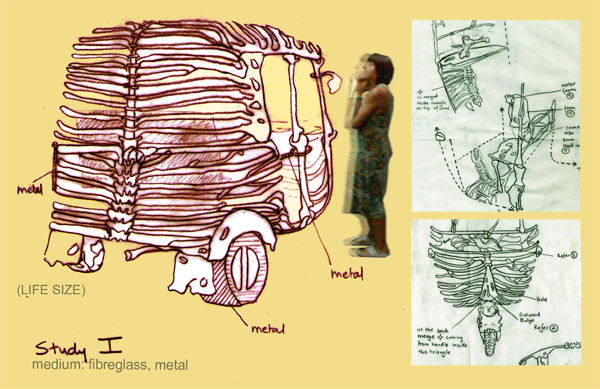
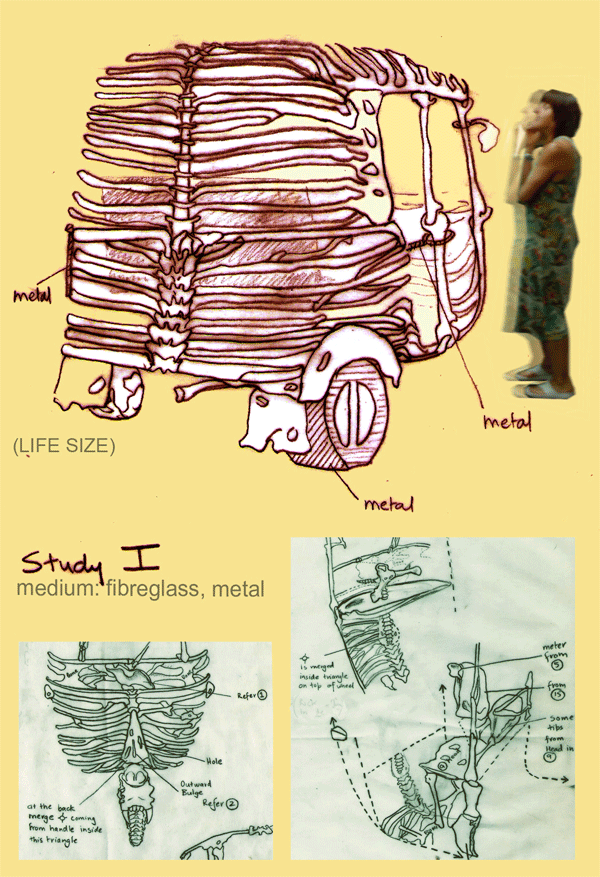
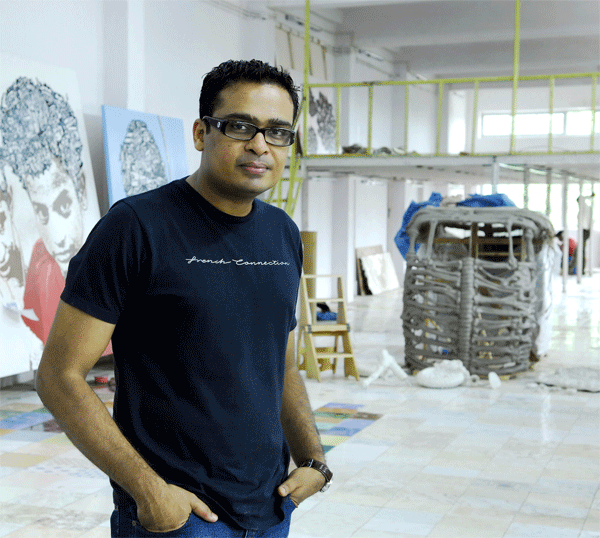
画廊:Chemould Gallery
[attachment=54522]
[attachment=54520]
[attachment=54521]
艺术家Artist: Jitish Kallat
题目Title: AUTOSAURUS TRIPOUS
尺寸Size: 104inches L x 49inches B x 65inches H
材料Medium: Mixed Media
创造时间Year : 2007
Jitish Kallat, Autosaurus Tripous
Jitish Kallat 的 Autosaurus Tripous 代表一个用玻璃钢做的一个人力车的骨架,像消灭种类。Kallat 说这个作品“是一个真大小的娱乐人力车,也可以叫tuk-tuk (泰国语) 或其他名字按照国家,通过假骨头,像自然博物馆里面的史前的动物。” Autosaurus Tripous 提到日常城市生活跟当代政治的暴力。艺术家认为这个作品也介绍“日常堵车情况的受害者的感觉,而被抛弃的老汽车的尸体在印度的路景”
Jitish Kallat’s Autosaurus Tripous fashions a fiberglass morph between a rickshaw and a bony, stripped-down skeleton in simulation of an extinct species. Kallat notes that the work “is a life-size recreation of an auto-rickshaw, referred to as tuk-tuk or auto in other parts of Asia, through simulated bones, as if it were the re-structured remains of a prehistoric species and displayed in a Natural History Museum.” Autosaurus Tripous elides the punishing reality of everyday urban life with the violence of contemporary politics. The artist adds that this work presents the result “of daily traffic jams rendered as a victim, shattered in the crossfire of a sectarian riot; or the abandoned carcass of a discarded, antiquated automobile in the fast-changing Indian streetscape.”
关于Jitish Kallat
Fabricating monumental canvasses imaged in simulation of graffitied billboards and translating reproductions and iconographies sourced in the mass-visual media, Jitish Kallat’s crowded textures and mobbed narratives testify to an ever-evolving, saturated urban experience. In an accelerated and prolific decade since his graduation from the J.J. School of Art, Kallat has developed a signature style (stamped with dated ‘copyrights’) executed variably in mixed-media paintings, photography, and sculptural installations. His work collectively narrates an unfiltered, roughly-hewn dialectic between individual and universal experiences in Mumbai, where he lives and works.
Kallat held his first solo exhibition, “P.T.O.,” at Gallery Chemould in 1997, less than a year after his art school graduation. Drawing on elements of autobiography especially in initial exhibitions like “Apostrophe” in New Delhi, 1998, Kallat transformed self-portraiture and distorted pre-existing, recognizable photocopy and newsprint images into large-scale paintings in step with commercial media and the fast, abrasive physicality of changing Mumbai.
“Ibid,” a 2001 exhibition at Gallery Chemould, expanded Kallat’s visualization of personal, genealogical narrative in mixed media works like Maternamortal (Mom’s Mom’s Mom and Mom’s Dad’s Mom) and the experience of everyman in Ode to the Spinal Cord, a layered canvas that locates the local suburban train network as the backbone of Mumbai. By this time also, imprinting titles on his canvasses gave way to involved manipulations of text in select canvasses like Herbs in My Maternal Home, which provides the artist’s family biodata. The incorporation of text and verbal narrative into Kallat’s painted works complements his frequent, often parallel practice of critical writing on contemporary art.
By the time of his subsequent solo “Milk Route,” presented in 2001 by Gallery Chemould in New Delhi, Kallat began to abstract and directly mediate representations of local networks through his international experiences. In twinned exhibitions “The Lie of the Land” and “Humiliation Tax,” held in Chicago and at Gallery Chemould in 2004 and 2005, Kallat employed Pop colors and thick, flat lines to comment on the specific, historical event of a speech about tolerance made by Swami Vivekananda on September 11, 1893, and the universal problems besetting impoverished children in India. Rather than artificially resolve the surfaces of his canvasses, Kallat images active mediations on ongoing contemporary struggles and tensions.
In the eponymous series from the exhibition Rickshawpolis, held in New Delhi, Milan, and Sydney between 2005 and 2007, masses of public, private, modern, and traditional vehicles explode from central nodes of the canvasses, flattened into crowded surface silhouettes. Resting the canvasses on paired bronze lions leaping forward from the wall, Kallat transports his paintings into faceted installations. Simultaneous to taking his painting practice into multiple dimensions, Kallat has pursued ambitious, large-scale photography projects like Artist Making Local Call and Onomatopoeia/ (The Scar Park), which envision the urban panorama through public and private perspectives, respectively; where the Artist engages a wide-angled, prism of public streets in suburban Mumbai in the former, his latter Park abstracts close-ups of diversely colorful private vehicles, seaming individual images together with uniform black frames.
Kallat held a major solo exhibition, “365 Lives,” at the Arario, Beijing in July 2007, with new series of mixed-media paintings, photographs, and sculptures that developed earlier themes of urban overflow and daily struggle, offering balms for inventive anxieties in 54 parts with Analgesic Studies. While primarily evolving a grounded narration of the extremities of urban experience with the first decade of his artistic practice, Kallat’s own career looks ahead, seemingly unbound by any terrestrial threshold or limitation.



参展艺术家:王度
画廊:Galerie Baronian-Francey, Brussels / Galerie Laurent Godin, Paris
时尚
2007
工作室场景
铜
感谢 Galerie Baronian-Francey, 布鲁塞尔 / Galerie Laurent Godin, 巴黎
[attachment=54574]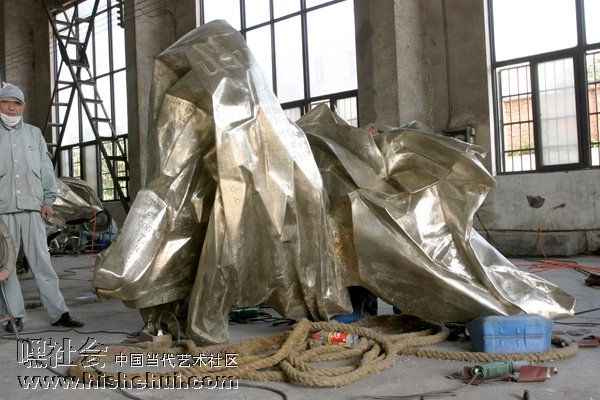
画廊:Galerie Baronian-Francey, Brussels / Galerie Laurent Godin, Paris
时尚
2007
工作室场景
铜
感谢 Galerie Baronian-Francey, 布鲁塞尔 / Galerie Laurent Godin, 巴黎
[attachment=54574]

参展艺术家:SUDARSHAN SHETTY
画廊: GALLERYSKE
后院(局部)
雕塑装置
铸铝,PVC 管
铸铝电视墙:10 英尺 (宽) x 8 英尺 (高) x 2英尺 (深); PVC管树:9 英尺(高)
2007
[attachment=54575]
为一直迎接建立观众模型的挑战,Sudarshan Shetty 生动的机械雕塑正如恐怖主题一样有趣。伴随着颠覆和“反常得几乎没有坠落”(Vyjayanthi Rao 语,Statics 论文目录),作品通常探索残缺的思想。充满活力的作品兼有双重性,一方面对人类关系的阴暗面看起来不协调的地方进行反讽,通常对人类的自由愿望的假想存有疑虑;一方面又揭示事物的内在本质。
艺术家生活并工作于孟买。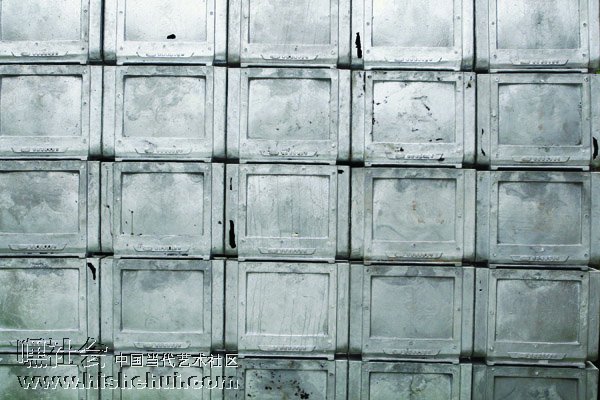
画廊: GALLERYSKE
后院(局部)
雕塑装置
铸铝,PVC 管
铸铝电视墙:10 英尺 (宽) x 8 英尺 (高) x 2英尺 (深); PVC管树:9 英尺(高)
2007
[attachment=54575]
为一直迎接建立观众模型的挑战,Sudarshan Shetty 生动的机械雕塑正如恐怖主题一样有趣。伴随着颠覆和“反常得几乎没有坠落”(Vyjayanthi Rao 语,Statics 论文目录),作品通常探索残缺的思想。充满活力的作品兼有双重性,一方面对人类关系的阴暗面看起来不协调的地方进行反讽,通常对人类的自由愿望的假想存有疑虑;一方面又揭示事物的内在本质。
艺术家生活并工作于孟买。

参展艺术家:Rirkrit Tiravanija
理科理 太拉皖贾
无题2007之一
行为、雕塑装置
桌子(长200cm, 宽170cm, 高67cm ),玻璃罩、黑丝绒、钻石
2007
[attachment=54576] [attachment=54577]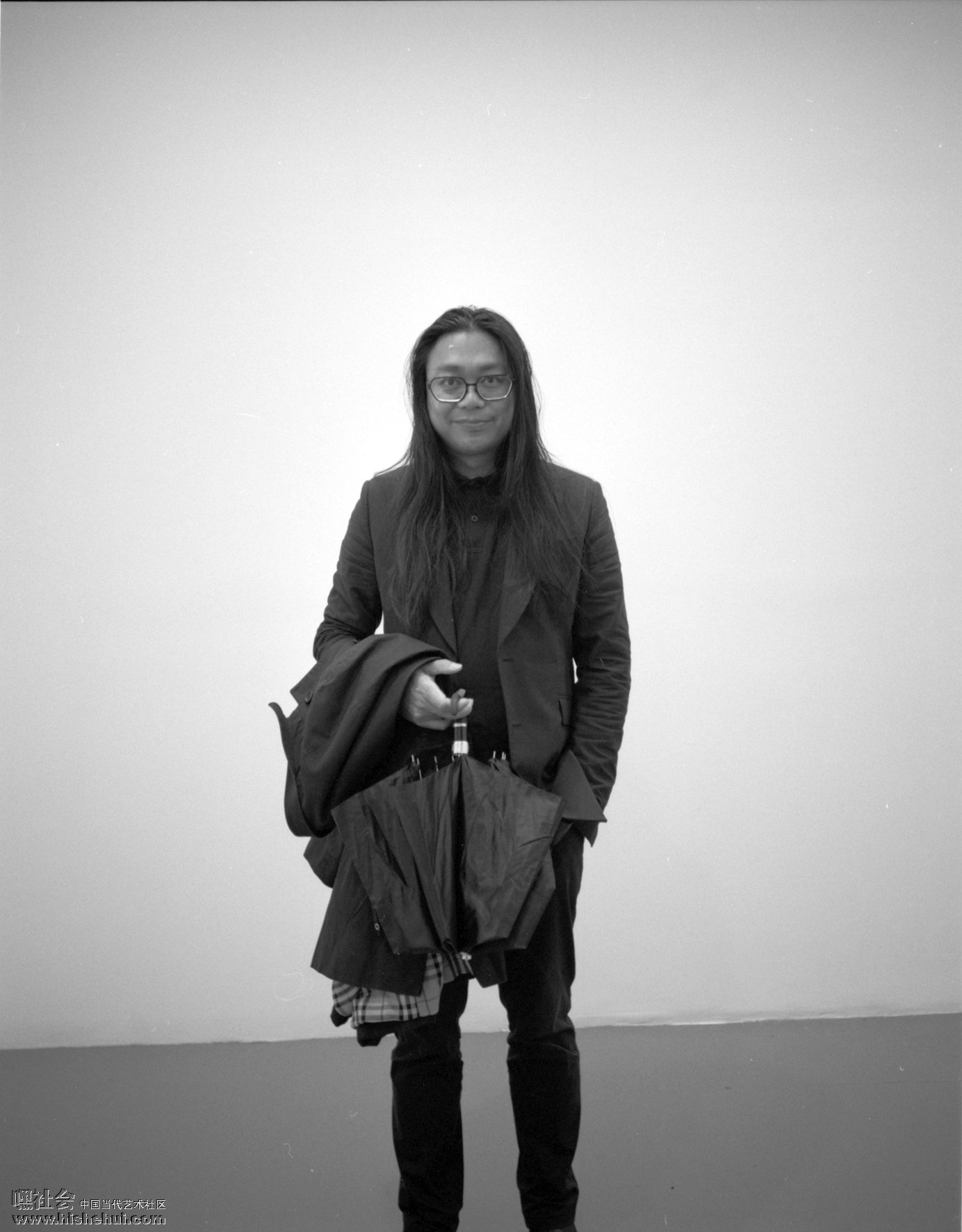
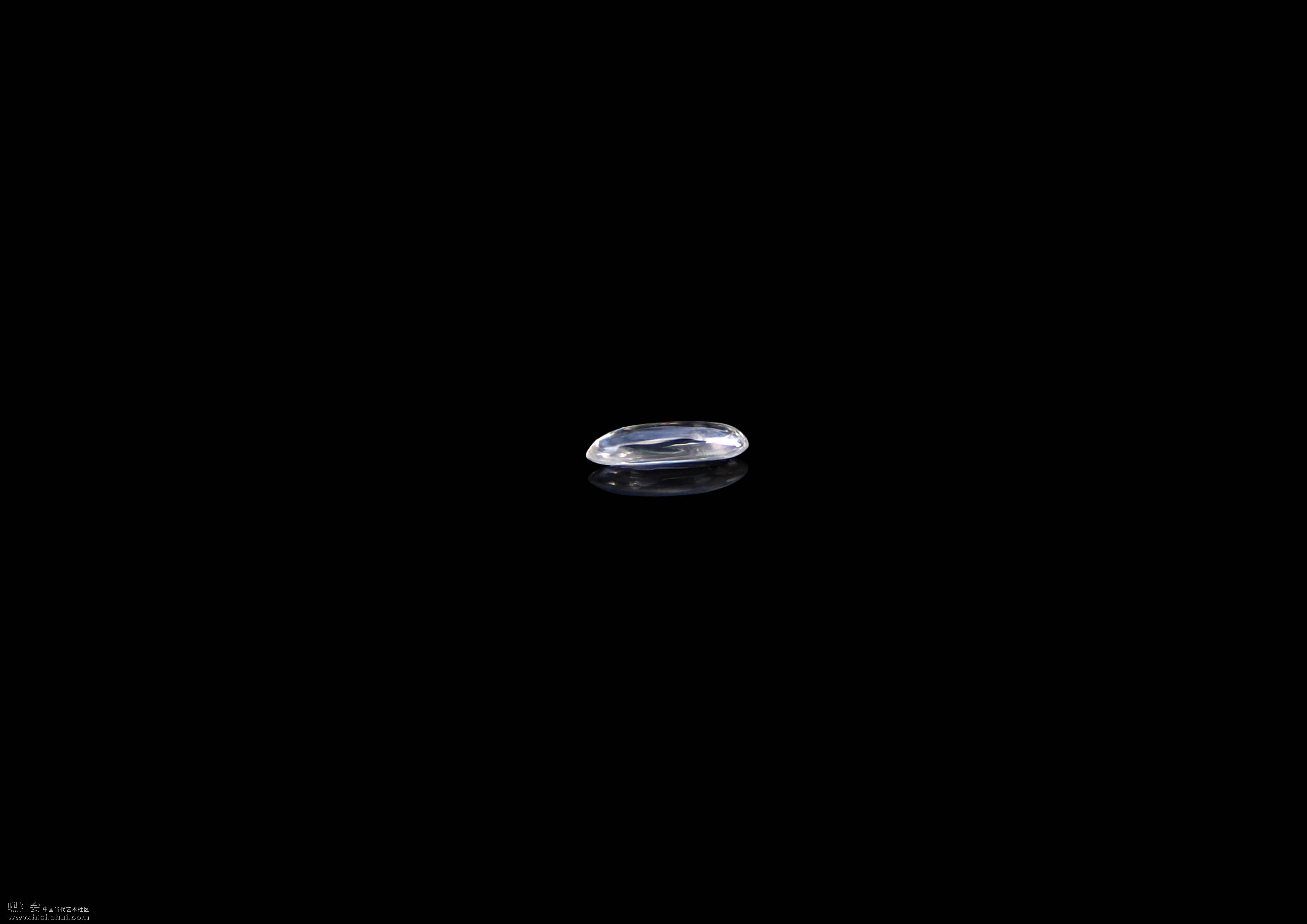
理科理 太拉皖贾
无题2007之一
行为、雕塑装置
桌子(长200cm, 宽170cm, 高67cm ),玻璃罩、黑丝绒、钻石
2007
[attachment=54576] [attachment=54577]


参展艺术家: 王广义
代理画廊:ShanghArt Gallery 上海香格纳画廊
1957, Harbin, China 1957年出生于中国哈尔滨
Lives and works in Beijing, China 生活和工作于北京
王广义的艺术从广泛的图像(比如著名的宣传画和照片)中取样,并把它们和著名的公司品牌熔合到一起,从而破坏它们的原义。通过对意识形态和广告的结合,他批判了两者仅止于表面的“真实”。总之,他把社会主义现实的图像和符号都烙进了一个异常矛盾和离题的系统里。这些绘画试图强调一个事实,那就是这两者尽管没有明显的联系,但它们的主要目标,却都是想说服群众相信它们的产品是可以信赖和有着神奇功效的。在艺术的策略上这些图像的生产有着不同的层次,都是符号的和现实的,积极地显示和抵消这些典型经济范例以及它们在社会和文化上的暗示。
[attachment=55293]
王广义
冷战美学
2007年
综合材料
230X170cm (5)
第10-1版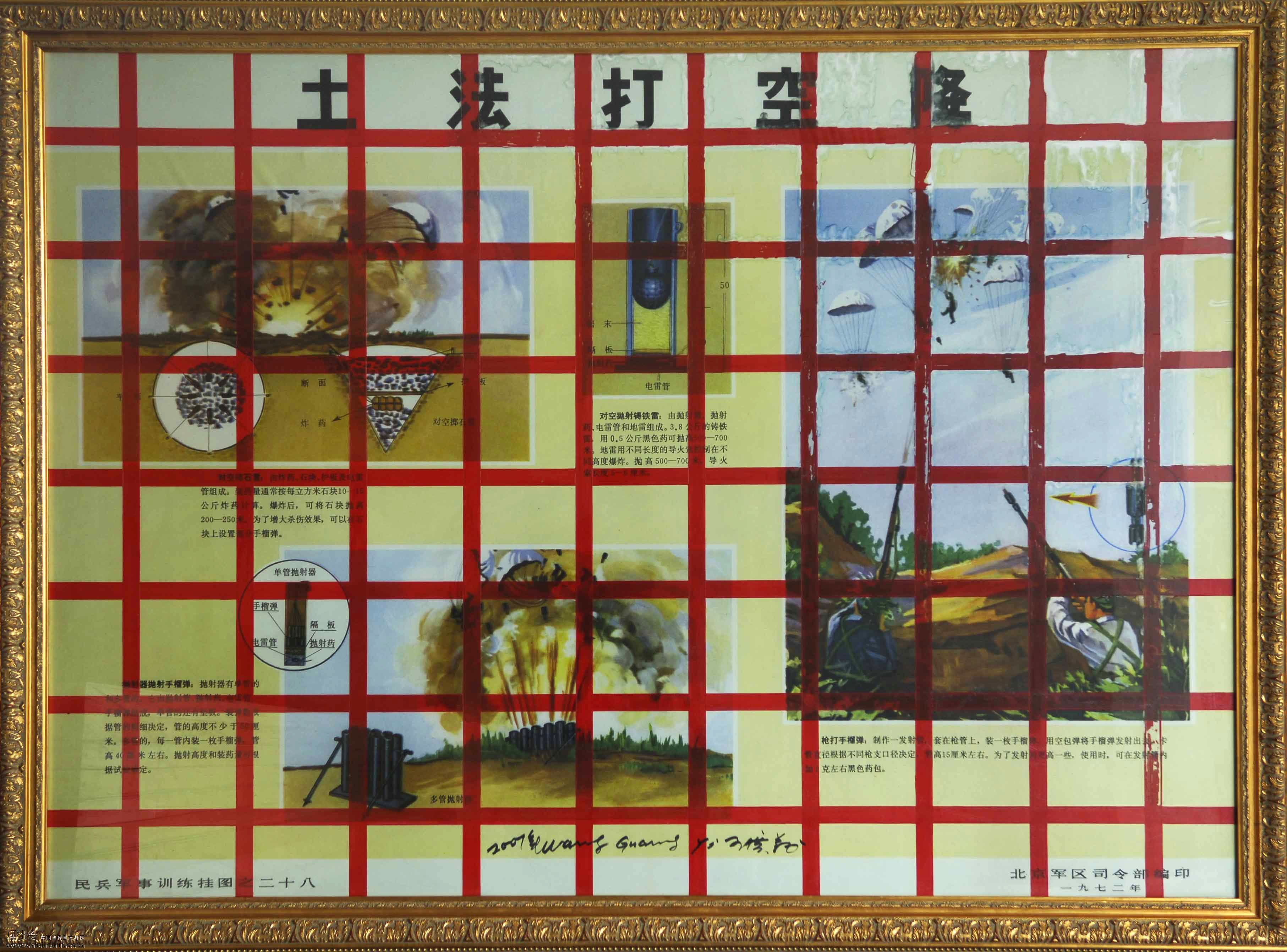
代理画廊:ShanghArt Gallery 上海香格纳画廊
1957, Harbin, China 1957年出生于中国哈尔滨
Lives and works in Beijing, China 生活和工作于北京
王广义的艺术从广泛的图像(比如著名的宣传画和照片)中取样,并把它们和著名的公司品牌熔合到一起,从而破坏它们的原义。通过对意识形态和广告的结合,他批判了两者仅止于表面的“真实”。总之,他把社会主义现实的图像和符号都烙进了一个异常矛盾和离题的系统里。这些绘画试图强调一个事实,那就是这两者尽管没有明显的联系,但它们的主要目标,却都是想说服群众相信它们的产品是可以信赖和有着神奇功效的。在艺术的策略上这些图像的生产有着不同的层次,都是符号的和现实的,积极地显示和抵消这些典型经济范例以及它们在社会和文化上的暗示。
[attachment=55293]
王广义
冷战美学
2007年
综合材料
230X170cm (5)
第10-1版

参展艺术家: 陈劭雄
代理画廊: Universal Studios-Beijing 北京优艾思贝画廊
1962, Shan Tou, Guang Dong Province, China 1962年生于广东省汕头
Lives and works in Guang Zhou, China 生活和工作于广州
陈劭雄的作品使用了包括摄影,录像,装置,水墨在内的各种媒介,探讨正在经历巨大转变的中国城市生活所蕴涵的活力。他的作品通常设置在一个假想的城市背景下(用他自己的话来说就是“城市风景”),记录人们忙碌不停的步伐和日常生活的荒诞性:这些片段来自于他的家庭生活,政治事件,以及餐厅,夜店和歌厅等娱乐业的片段,陈劭雄用一种直截了当的方式,将传统水墨画和新兴的录像多媒体艺术结合,以不复杂的方式,描述出普通人的生活是如何面对当代生活各种复杂的议题,这种风格让陈劭雄的作品具有一种难以预料的真实和直接。
[attachment=55294]
陈劭雄
2007年
水墨画(创作中)
宣纸水墨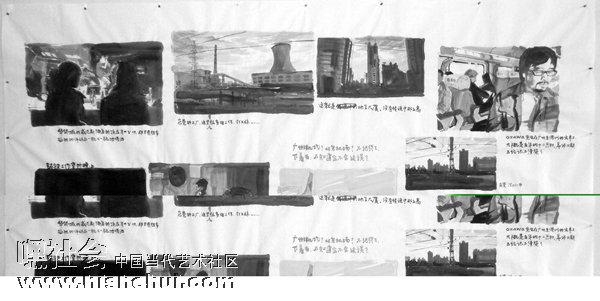
代理画廊: Universal Studios-Beijing 北京优艾思贝画廊
1962, Shan Tou, Guang Dong Province, China 1962年生于广东省汕头
Lives and works in Guang Zhou, China 生活和工作于广州
陈劭雄的作品使用了包括摄影,录像,装置,水墨在内的各种媒介,探讨正在经历巨大转变的中国城市生活所蕴涵的活力。他的作品通常设置在一个假想的城市背景下(用他自己的话来说就是“城市风景”),记录人们忙碌不停的步伐和日常生活的荒诞性:这些片段来自于他的家庭生活,政治事件,以及餐厅,夜店和歌厅等娱乐业的片段,陈劭雄用一种直截了当的方式,将传统水墨画和新兴的录像多媒体艺术结合,以不复杂的方式,描述出普通人的生活是如何面对当代生活各种复杂的议题,这种风格让陈劭雄的作品具有一种难以预料的真实和直接。
[attachment=55294]
陈劭雄
2007年
水墨画(创作中)
宣纸水墨

参展艺术家:Zarina Hashmi
代理画廊:Bodhi Art
1937, Aligarh, India 1937年出生于印度阿里加尔
Lives and works in the U. S. A. 生活和工作在美国
[attachment=55295]
Zarina Hashmi
家庭制造/九条线生活(第九套)
1997年
中式装裱、尼泊尔手工纸
14x13 英寸(每张)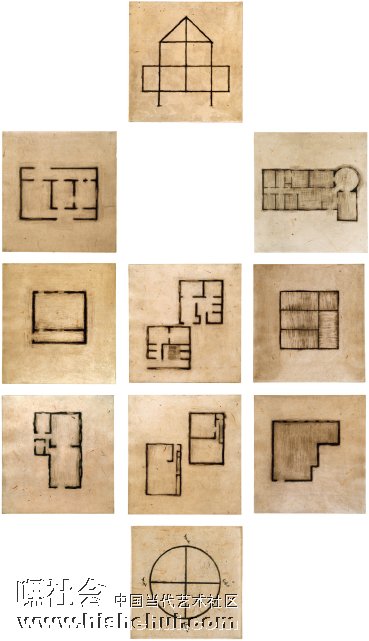
代理画廊:Bodhi Art
1937, Aligarh, India 1937年出生于印度阿里加尔
Lives and works in the U. S. A. 生活和工作在美国
[attachment=55295]
Zarina Hashmi
家庭制造/九条线生活(第九套)
1997年
中式装裱、尼泊尔手工纸
14x13 英寸(每张)
